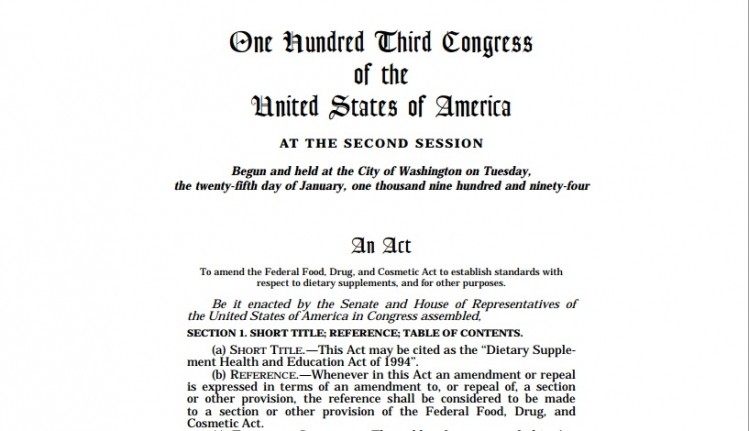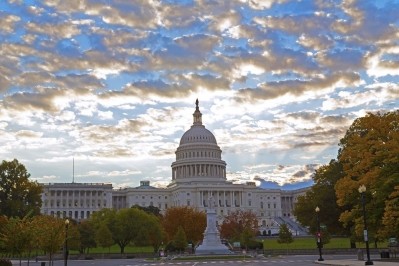Guest article
Goin’ Back in Time with DSHEA

As we observe the 20th anniversary of the Dietary Supplement Health and Education Act (DSHEA), we should ask ourselves “what if we could do it all over again?” Since DSHEA was enacted under President Clinton, it has spawned tremendous growth, propelling a $4 billion industry in 1994 to over $30 billion today. With a few amendments along the way, DSHEA has held up as a reasonable framework for balancing regulatory oversight with consumer access to products and information. But what would we do differently with the benefit of 20 years of hindsight?
First, I think we would have created the mandatory adverse event reporting (AER) requirement from the start. One of the early weaknesses identified by industry critics was that the law did not require post-market surveillance. The ephedra controversy of the early 2000s demonstrated that the Food and Drug Administration (FDA) must be able to look over the shoulders of manufacturers to identify trends and signals of potential problems in the marketplace. That was fixed in 2006, and today, AERs provide the agency with a useful tool for monitoring the safety of dietary supplements.
Second, most industry executives would agree that DSHEA should provide more intellectual property protection for their research investments than it does. Foreign distributors can piggyback their products on the scientific research conducted by branded ingredient suppliers, and unlike branded pharmaceutical producers, there is little legal protection to reward that research and prevent it from being misappropriated. This problem is compounded by the fact that most dietary ingredients are—by definition—natural compounds, so unless they are processed in a proprietary manner, the molecules are easily patentable. Over the years, industry has grappled without success for a solution to this conundrum that doesn’t violate the First Amendment. It’s worth continued efforts to solve.
Back in 1994, the internet didn’t exist either, so the drafters didn’t consider how easy it would become for obscure marketing firms to violate the prohibition of disease claims and mislead millions of consumers with fraudulent pop-up ads promising to cure cancer, Alzheimer’s and diabetes. If they had it to do over again, perhaps the drafters would have increased the penalties for fraudulent marketing and labeling, or required online marketers to register their claims. Alternatively, they might have set up an industry-funded third party to review such claims and give them a seal of approval that consumers could trust.
That raises another issue—establishing reasonable barriers to entry that require more upfront information from companies trying to enter the market. Many in the industry now believe it’s too easy to hire a contract manufacturer, print some labels and start marketing supplements. The inspection authority in DSHEA was supposed to address that, and the facilities registration requirement in the 2011 food safety law, along with the pre-notification requirement for new dietary ingredients (NDIs), were intended to create hurdles for new firms that would alert FDA to their existence. However, the number of firms that haven’t had their first GMP inspection four years after the regulation was fully implemented suggests FDA isn’t keeping its end of the bargain. If we revisited the law today, would it include a product registration or certificate to do business as a dietary supplement firm? Or the ability to debar firms and executives who violate the law?
With hindsight, we also would have paid more attention to the NDI provisions of DSHEA. In 2014, we are still waiting for a revised NDI guidance, and still at odds with the agency on many of the details. The concept was a sound one, and still is today—established products already in the market should have a presumption of safety, but marketers should have to assure FDA that they have a reasonable expectation their new ingredients are safe. We would clarify the specifics more than we did in 1994. Like, what is a “grandfathered” ingredient? Is it a synthetic version of a botanical material or an NDI? And what constitutes “chemically altered?” Is an old ingredient considered “new” because of the processing to which it is subjected?
Finally, industry might have given FDA even more incentives to enforce the law, not just dedicated resources and a funding mechanism, but political incentives to use its authority. While the industry was generally distrustful of FDA in 1994, we recognize now that a strong market needs strong enforcement against outliers. The real “beef” for many critics who say DSHEA isn’t strong enough is that FDA isn’t using the tools it was provided—and the industry’s reputation suffers because consumers think that law isn’t working.
Now, if you will excuse me, all this talk about 1994 is making me want to go put on my grunge jeans and t-shirt and listen to my Boys II Men CD on my Walkman.
Steve Mister











